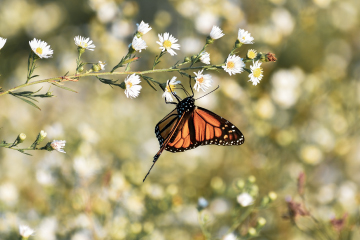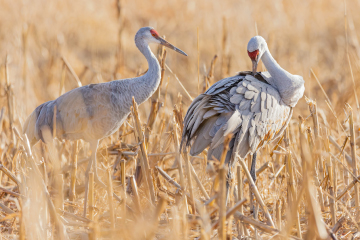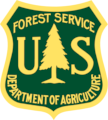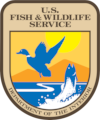Dec
04
2025
Latest
Intentionally and surgically burning grassland or woody vegetation – whether in the far reaches of the Sandhills or the urban ‘habitats’ inside the city of Lincoln – is a tool of great benefit. But only if undertaken carefully and safely after intense planning. That message was drilled into those who sat in for Wednesday’s all-day, […]
Read More
Oct
02
2025
In the Rainwater Basin Wetland Complex, 90% of the wetland footprints have been drained, with only 20% of wetland acres continuing to exhibit some level of wetland function (pond water grow hydrophytic vegetation). Despite this staggering loss of habitat an estimated 8.6 million waterfowl continue to rely on this region during spring migration. With the […]
Read More
Oct
02
2025
The tour allowed the RWBJV partners to showcase successful collaborative conservation projects. Tour stops included a mix of projects on public and private lands. At each stop, partners were able to highlight the wildlife habitat, water quality and water quantity benefits that have been achieved through investments on public lands and through voluntary incentive-based conservation programs […]
Read More
Oct
02
2025
The Conservation Reserve Program is a federally funded voluntary incentive-based program administered by the United States Department of Agriculture’s Farm Service Agency. Conservation Reserve Program provides a contract to agricultural producers to re-establish grasslands on cropland with environmentally sensitive acres. This grassland cover helps control soil erosion, improve water quality and provide wildlife habitat. In […]
Read More
Oct
02
2025
Nebraska’s grasslands are a national treasure. These grasslands significantly contribute to the state’s agricultural economy and support over 20 million grassland nesting birds and other resident wildlife species. Priority species include Greater Prairie Chicken, Sharp-tailed Grouse and Western Meadowlark. Managing habitats for these species is critical as many grassland obligates have experienced significant population declines […]
Read More
Apr
04
2025
Nebraska’s Sandhills are a 19,300 square mile grass-stabilized, sand dune formation. Despite the semi-arid climate this landscape contains an abundance of lakes, wetlands, wet meadows, and spring-fed streams scattered throughout 12 million acres of grasslands. Grassland conversion to cropland is limited because of the sandy soil. However, invasion by Eastern Red Cedar continues at an […]
Read More
Apr
04
2025
The western portion of Tri-Basin Natural Resources District (Tri-Basin NRD) contains the eastern of the Loess Canyons landscape. This geography is dominated by loess soils with rolling to steep topography. As a result of the topography there are large contiguous tracts of grasslands in this portion of Tri-Basin NRD. These Loess Canyon grasslands are a […]
Read More
Apr
04
2025
Dr. Zhenghong Tang’s Geo-AI Research Lab at the University of Nebraska-Lincoln has published a new ArcGIS Story Map to visualize the inundation conditions for conservation lands in Nebraska, including Conservation Easements (CEs), Waterfowl Production Areas (WPAs), and Wildlife Management Areas (WMAs). The Story Map is publicly accessible and will assist stakeholders in implementing effective conservation […]
Read More
Apr
04
2025
Nebraska is 97% privately owned. This requires conservation solutions to fit into working farm and ranch operations to ensure sufficient groundwater, surface water, and wildlife habitat for Nebraska’s future generations. Research from the University of Nebraska Lincoln and Purdue University have highlighted that family, friends, and individuals from the agriculture industry sector are the most […]
Read More
Jan
06
2025
The RWBJV worked closely with multiple Natural Resources Districts (NRDs) and local Natural Resources Conservation Service (NRCS) staff to highlight grassland enhancement opportunities, as well as water quality and quantity conservation practices available through NRCS’s Environmental Quality Incentives Program (EQIP) and other partner programs. Twelve different strategic mailings were completed based on input from the […]
Read More
















